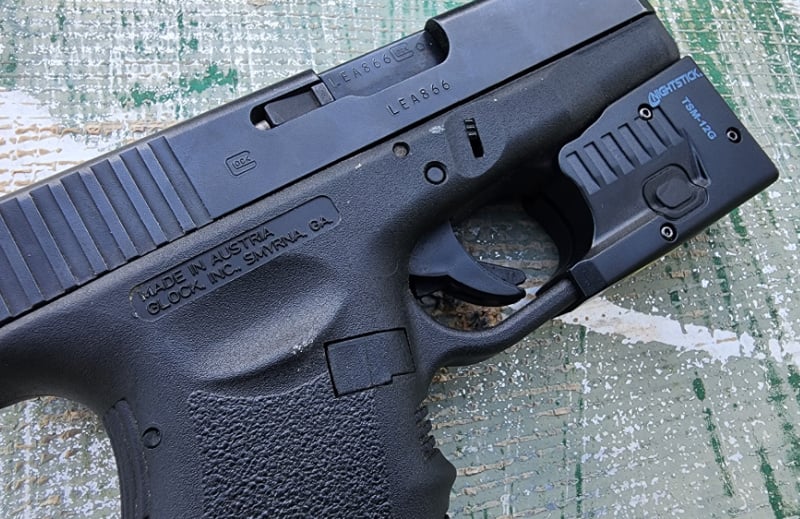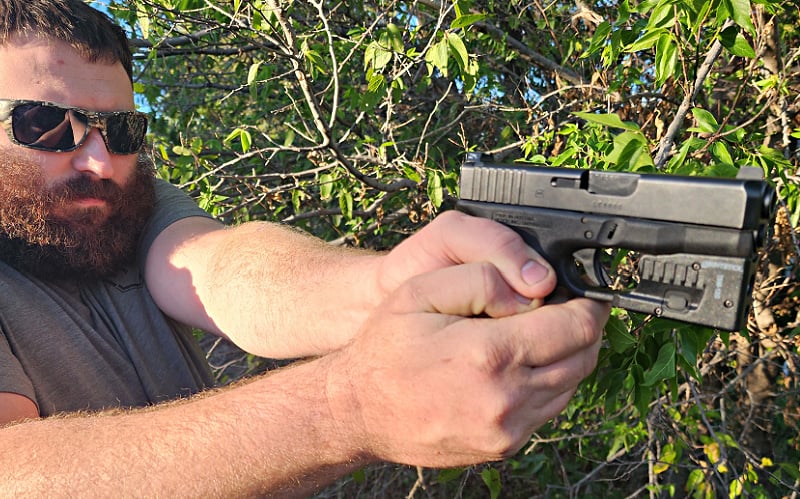In general, Glock handguns are popular guns that have proven themselves for decades as reliable, durable pistols that can handle all kinds of abuse. Some models are more commonly used than others, though, especially as trends in calibers and capacity shift. One of the under-sung heroes of the Glock world is the Glock 27, a subcompact .40 S&W that remains a solid gun despite the fact the caliber has fallen out of fashion. It’s still a great pistol, and we’re going to explain why.

What is the Glock 27?
The Glock 27 first hit the market in 1995. This took place in the aftermath of the infamous 1989 FBI Miami Shootout, which is relevant because that terrible day triggered the creation of the .40 Smith & Wesson. That era’s technological capabilities meant the 9mm just couldn’t cut it — not yet — and in the end, the FBI wanted the .40 Smith & Wesson. Glock was one of many manufacturers to jump on releasing a gun chambered in the caliber, which itself was created in 1990. So it was relatively new, still, when the Glock 27 first became a thing. Over time, the Glock 27 has benefited from every evolution of the Glock generations. That’s right, there’s a Gen 5 Glock 27 on the market.
This pistol is a subcompact that was designed for defensive use (and use as a backup gun). It has the classic Glock double-stack, making it wider and heavier than the newer Slimline guns. The older generations look about as you’d expect. That means finger grooves, no Marksman’s barrel, and so on. Even without those things the older generations of the Glock 27 are fantastically reliable and accurate on target.

Glock 27 Specifications
The overall dimensions of the gun haven’t really changed with time although the newer generation of gun does boast the usual enhanced features. It has a 3.43-inch barrel, which is part of what makes it so easy to use for concealed carry, and an empty weight of 23.85 ounces. Loaded, it weighs a fair bit more, because this gun has a 10 +1 capacity with a flush-fit magazine. Extended magazines that hold 13 and 15 rounds are also available. Its overall length is 6.42 inches, overall height is 4.21 inches, and width is 1.30 inches. As you can imagine, while it’s thicker than some guns, it’s still not that large.
Features of the Glock 27 include upright, thick serrations at the front and back of the slide, a squared-off trigger guard, and the expected Glock textured grip. If you get a Gen 4 or 5 model, there will be interchangeable backstraps in the box so the fit of the gun can be adjusted for your hands. Older generations didn’t offer that, but despite that, the gun works well. Not to mention there are always Hogue grip sleeves if you want to change the thickness or shape of its grip.
Gen 5 Glock 27s benefit from the removal of finger grooves on their frames while older gens have finger grooves. For example, the Gen 3 — with some Gen 2 parts — in this review has finger grooves. Again, that can be smoothed out with a grip sleeve if you’re so inclined. Basically, there is no bad generation of the Glock 27.
How does it shoot?
Here’s the great thing about this particular Glock 27. Over nearly two decades of use, this gun has seen and done it all. It’s used all manner of ammunition and more rounds than I can remember. For the purposes of this review, it cycled through rounds of Magtech 40 Smith &Wesson 180 grain FMJ, Speer Gold Dot 40 Smith & Wesson 180 grain JHP, Winchester Silvertip 40 Smith & Wesson 155 grain JHP, and Hornady Critical Defense 40 Smith & Wesson 165 grain FTX. It continues to cycle reliably with no failures of any kind. Over the years it’s experienced a handful of failures related to a worn-out magazine and defunct aftermarket trigger pin. But for the most part, it’s eaten everything it’s been given — FMJ, JHP, HP, Frangible, you name it. There was even a stretch when it burned through some steel-cased ammo, many years ago.
The width of the Glock 27 fits my hands quite well, but for myself as with most shooters, the shortened height of the grip leads to hanging fingers. This is easily remedied by adding a Pearce Grip Extension to flush fits magazines and by using extended magazines. With the Pearce Grip Extension in place the gun can still be easily concealed, and having that extra bit of support for your hands can make quite a difference in accuracy.
This gun came with standard white three-dot sights, as was the factory style of the time. It’s since been upgraded with Trijicon HD Night Sights. Currently, the gun has a Nightstick weapon mounted light on it, and it’s seen a variety of accessories over time.
Despite its subcompact frame the Glock 27 is a relatively flat shooter that doesn’t create an enormous amount of felt recoil or muzzle rise. It’s accurate on target and, in fact, creates beautiful single-hole, five-shot groups during playing card drills from 3 and 5 yards. Groups understandably spread out at greater distances, but this gun can ring steel at 50 yards.
Even in longer live-fire sessions, shooting the Glock 27 is easy on your hands. Recoil is not extreme and the gun’s design balances it nicely. While this gun is ideal for self-defense applications, it can certainly be used for hunting coyotes and feral hogs as long as you keep an eye on shot placement (which you should be doing anyway).

Should you get a Glock 27?
It’s true, the .40 Smith & Wesson no longer has such a significant ballistic advantage that it’s phenomenally better than the 9mm. Yes, it is just a bit better, but the difference is no longer huge. Barrels on the .40 Smith & Wesson do burn out faster than those on the 9mm, although it still requires quite a bit of shooting to get to the point that you need to replace a barrel. The ammo costs a bit more and the felt recoil is greater than the 9mm. Does that mean the Glock 27 is out of date and not worthwhile? Not at all.
The Glock 27 remains a well-made, reliable gun that’s great for concealment and more than capable of being effectively used for self-defense. This is a gun that has proven itself impressively reliable and that is at the top of the list of important details for a carry gun. Whether or not you get a Glock 27 comes down to personal preference. And while I understand the leanings toward 9mm, there will always be a soft spot in my gun-loving heart for the Glock 27. It’s a great gun, and if you’re inclined to get a 40 in your collection, the Glock 27 is the perfect option.


